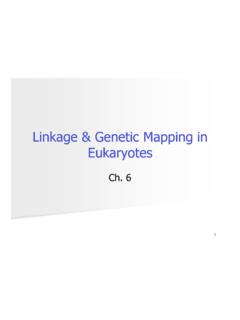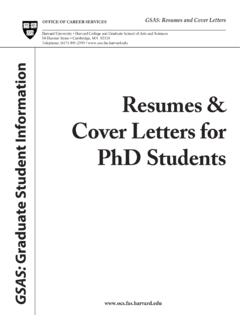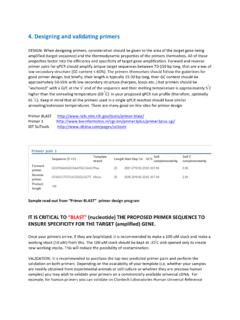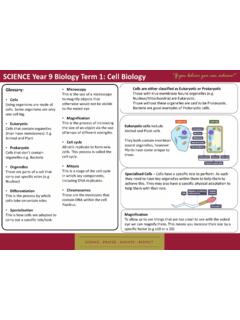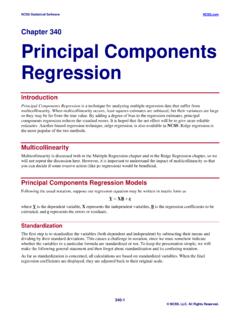Transcription of THE ULTIMATE A-LEVEL AQA BIOLOGY CHEATSHEET PACK
1 THE ULTIMATE A-LEVEL AQA BIOLOGY CHEATSHEET PACKA chieve Better Grades with Less StressOur intelligent platform provides high quality, personalised support that is more effective than private tutoring available 24/7 at a fraction of the costBite-size VideosSmart QuizzesMini Revision Guides24/7 Tutor SupportPersonalised Learning PathsPredicted Exam PacksLEARN MOREHow to UseThe aim of this pack is simple we wanted to condense the A-LEVEL BIOLOGY course into a few super condensed pages. Now you have a concise summary of the entire course that focuses on the most important definitions, key terms, diagrams and concepts. We ve spent weeks working with top designers, academic writers and illustrators to ensure this is the best CHEATSHEET out there.
2 Our promise to you is you won t find anything better. The CHEATSHEET pack has been built off the AQA specification to ensure no important information is missed below is a table which summarises how our cheatsheets map to the AQA hope you enjoy using it and wish you the best of luck in your A-levels. SnapReviseSpecification , Lipids & acids, ATP, Water & Inorganic structure & transport & exchange, Digestion & Mass Information, Protein Synthesis, Classification & & , Ecosystems & Nutrient , Receptors, Neurones & & , Evolution & Cells, Mutations, Gene Regulation, Cancer & Genome , LIPIDS & PROTEINSCHEAT SHEETM onomers & Polymers Monomers are individual molecules that make up a polymer.
3 Polymers are long chains that are composed of many individual monomers that have been bonded together in a repeating pattern. Condensation Reactions occurs when two molecules combine to form a more complex molecule with the removal of water. Hydrolysis Reactions occurs when larger molecules are broken down into smaller molecules with the addition of water. Carbohydrates Monosaccharides are the simplest carbohydrates, consisting of only one sugar molecule ( Glucose, Fructose & Galactose). Glucose is a hexose sugar with 2 isomers Disaccharides are sugars that are composed of two monosaccharides joined together in a condensation reaction, forming a glycosidic monosaccharidesMaltose2 -glucoseSucrose -glucose and fructoseLactose -glucose and galactose Polysaccharides are formed by many monosaccharides joined together.
4 Amylose, amylopectin (starch) is the main polysaccharide energy store in plants, is composed of -glucose. In animals, the polysaccharide energy store is called glycogen, composed of -glucose. Cellulose is a structural component of plant cell walls, composed of long unbranched chains of Fatty acids can be: Saturated there are no C=C bonds and the molecule has as many hydrogen atoms as possible. Unsaturated there is at least one C=C bond, therefore the molecule contains fewer hydrogen atoms than is maximally possible. A triglyceride molecule is formed by joining one molecule of glycerol to three fatty acids through three condensation reactions, forming ester bonds.
5 Triglycerides have key roles in respiration and energy storage due to its insolubility and high carbon to hydrogen ratio. Phospholipids replace one of the fatty acid chains in triglycerides with a phosphate molecule. The hydrophobic tails and hydrophilic heads of phospholipids allow them to form phospholipid Amino acids are the monomer units used to make proteins. The 20 naturally occurring amino acids only diff er in their R groups. Dipeptides are formed when two amino acids are joined together by a condensation reaction, forming a peptide bond. A polypeptide is a polymer made of many amino acids joined together by peptide bonds. A protein may contain one or more polypeptide chains.
6 There are four structural levels:LevelDefi nition Bond typePrimaryThe specifi c sequence of amino acids in a polypeptide chainPeptide bondsSecondaryThe curling or folding of the polypeptide chain into -helices and -pleated sheets due to the formation of hydrogen bondsHydrogen bondsTertiaryThe overall specifi c 3-D shape of a protein, which is determined by interactions between R groups and the properties of R groupsHydrogen bondsIonic bondsDisulphide bridgesQuaternaryThe specifi c 3-D shape of a protein that is determined by the multiple polypeptide chains and/or prosthetic groups bonded togetherHydrogen bondsIonic bondsDisulphide bridgesBiochemical TestsMoleculeReagent Positive resultReducing sugarsBenedict s reagent HeatRed/orange precipitateStarchIodine in potassium iodide solutionBlue/blackNon-reducing sugarsHydrochloric acid HeatSodium hydrogencarbonateBenedict s reagent HeatRed/orange precipitateProteinsSodium hydroxideCopper (II)
7 SulphatePurpleLipidsEthanolWater ShakeCloudy whiteEnzymes Enzymes are biological catalysts that speeds up the rate of reaction and remains unchanged and reusable at the end of the reaction. They lower the activation energy of the reaction. The lock and key model proposed that each substrate is a key that only fi ts a specifi c lock or enzyme. The alternative induced fi t model has been proposed (below) The specifi city of enzymes is due to the tertiary structure of its active site, allowing complementary binding to substrates. Enzymes catalyse both intracellular and extracellular reactions that determine structures and functions from cellular to whole organism level.
8 Factors aff ecting enzyme activity include:pH:TemperatureEnzyme concentrationSubstrate concentrationCompetitive & non-competitive inhibitor ACIDS, ATP, WATER & INORGANIC IONSCHEAT SHEETDNA & RNA DNA & RNA are both polynucleotides. The basic structure of a nucleotide is:DNARNAN umber of StrandsTwo antiparallel strandsOne strandLengthVery longRelatively shortPentose SugarDeoxyriboseRiboseNitrogenous BasesAdenine, Cytosine, Guanine & ThymineAdenine, Cytosine, Guanine & UracilFunction Store genetic information Transfer genetic information & forms ribosomes with proteinsDNA Double Helix & Replication Polynucleotides are polymers made up of many nucleotide monomers joined together by a series of condensation reactions, forming phosphodiester bonds.
9 The DNA double helix is held together by hydrogen (H) bonds between complementary base pairs. 2 H bonds between Adenine & Thymine 3 H bonds between Cysteine and Guanine Semi conservative replication is the method in which DNA replicates, creating two molecules of DNA that consist of one original DNA strand and one newly synthesised DNA strand. DNA helicase breaks H bonds between the two strands Free nucleotides complementary base pair to the exposed strands DNA polymerase catalyses condensation reactions to join adjacent nucleotides, forming phosphodiester bonds. ATP The structure of ATP is:ATP ADPADP ATPR eaction typeHydrolysisCondensationEnzyme involvedATP hydrolaseATP synthaseEnergy profi le of reactionReleases energy Requires energy The hydrolysis of ATP can be coupled to energy-requiring reaction and used to phosphorylate compounds.
10 The condensation of ADP to form ATP can occur during respiration and photosynthesis. Inorganic Ions Inorganic ions are atoms or molecules with an electric charge, containing no carbon. Cations are positively charged ions Anions are negatively charged ions Inorganic ions occur in solution in the cytoplasm and body fl uids of organisms, some in high concentrations and others in very low concentrations Each type of ion has a specifi c role, depending on its properties Hydrogen ions determine the pH of bodily fl uids. The higher the concentration, the lower the pH Iron ions are essential components of the prosthetic group in haemoglobin and bind to oxygen Sodium ions are used in the co-transport of glucose and amino acids across cell membranes Phosphate ions are essential components of DNA, RNA & ATPW ater Water molecules consist of 2 hydrogen molecules covalently to an oxygen molecule.

